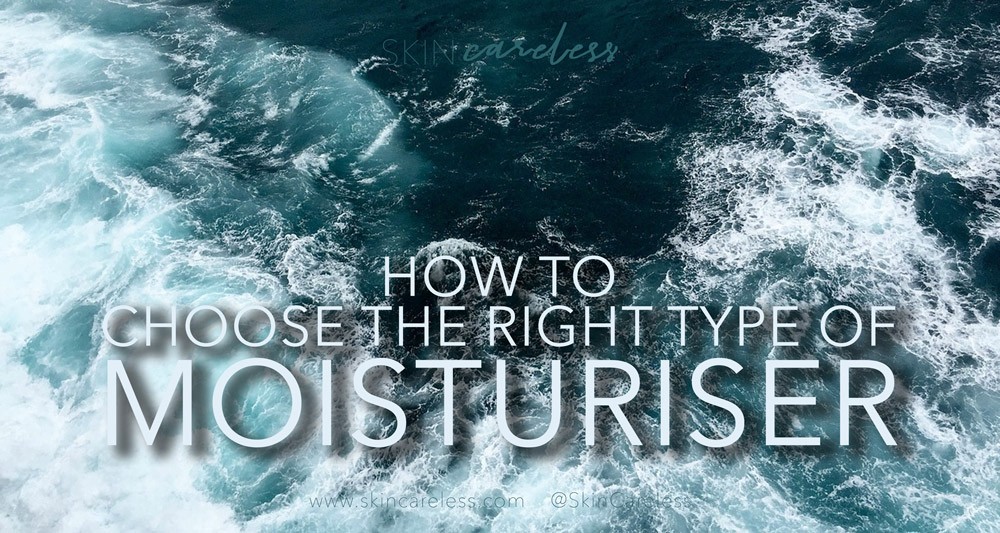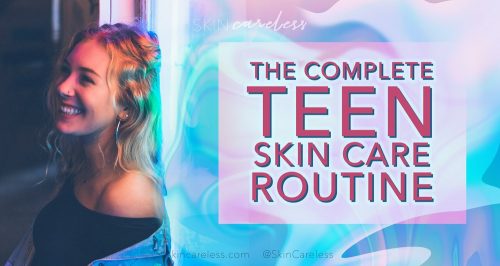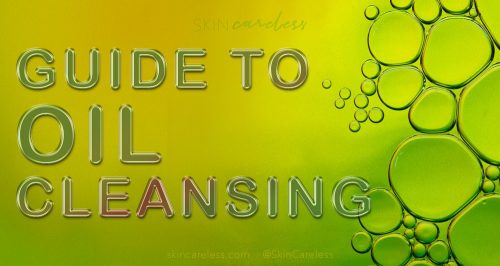Everyone always talks about how important a good moisturiser is in your skincare routine. But what makes a good moisturiser? And how do you pick the right one?
The key is in knowing the three classes of moisturising ingredients, and what each one does for you.
What’s a moisturiser for?
A moisturiser is anything you put on your skin to combat dehydration or dryness, and to provide flexibility, hydration and protection. It’s usually used after cleansing to replace whatever your skin is missing. They can also contain special ingredients like plant extracts, antioxidants and more. A good, basic moisturiser should be geared towards your skin type and condition, and contain some key moisturising ingredients:
The three things to look for when choosing a moisturiser
Common ‘moisturising’ ingredients can really be doing one of three things – increase hydration (water), replace oil and flexibility, or retain hydration. Each of these is achieved by one of three different categories of ingredients – HUMECTANTS, EMOLLIENTS and OCCLUSIVES. Let’s learn what each of these does for your skin:
HUMECTANTS
Humectants are ingredients that attract and hold on to water. These encourage water to come up from the deeper layers of the skin (dermis) up to the dead outer layer (epidermis). Increasing the amount of water in your epidermis has two effects. Firstly, it counteracts dehydration which is common in dry climates or in those with skin barrier disorders such as eczema. This can improve irritation and sensitivity in the skin. Secondly, plumping the skin with hydration reduces the appearance of fine lines and skin flaking, improving the skin’s texture. They usually feel very lightweight and cooling on the skin, and sink in quickly. Humectant-rich moisturisers are great for dehydrated or oily skin types that don’t necessarily need the heaviest moisturiser ever, but still want hydration.
HUMECTANT INGREDIENTS TO LOOK FOR IN YOUR MOISTURISER
- Hyaluronic acid
- Glycerin
- Glycols – e.g. propylene, butylene, hexylene, caprylyl glycol
- Honey
- Alpha Hydroxy Acids – Lactic, Glycolic
- Urea
- Aloe Vera
- Sodium PCA
- Sorbitol
- Allantoin
EMOLLIENTS
An emollient is an ingredient that encourages skin pliability and elasticity and keeps the skin soft, flexible and lubricated. They replace missing oils and natural moisturising factors (which live between your skin cells). As such, emollient ingredients are great for people with dry skin who lack oil and thus have a scaly, flaky, or rough skin texture. They are usually what make up traditional creamy, rich moisturisers. Emollients often feel thicker and heavier than humectants, but less greasy than occlusives, and sink in slowly over time.
EMOLLIENT INGREDIENTS TO LOOK FOR IN YOUR MOISTURISER
- Butters – ie. Shea, Cocoa
- Ceramides
- Urea
- Carrier oils – Squalane, Jojoba, Mineral Oil (NOT essential oils)
- Fatty alcohols – Cetyl, Stearyl and Cetearyl Alcohol
- Triglycerides
- Esters – ie. words ending in ‘ate’ e.g. benzoate, myristate, palmitate, stearate
- Beeswax
OCCLUSIVES
A good humectant isn’t very helpful without an occlusive. Occlusives prevent evaporation from the skin (Trans-Epidermal Water Loss aka. TEWL). It creates a ‘barrier’ so that skin stays moisturised, preventing dehydration in the first place. This works very well in tandem with humectants which draw water into the epidermis to keep it where it is needed. You can layer straight occlusives like Vaseline on after your other moisturisers to lock in the water. The only issue with these are their cosmetic inelegance – in other words, they can feel and look bad. They can be greasy and thick, and sometimes will not sink in. This means occlusive products are easier to use at night rather than during the day or under makeup. To manage this, I personally use a sunscreen rich in silicones (Sunplay Superblock 50+ PA++++ if you’re curious) to act as a mild occlusive during the day, without being greasy. It also works great under makeup, similarly to a primer. Similarly, you can find a moisturiser that contains occlusive ingredients in the formula which will make them easier to manage.
OCCLUSIVE INGREDIENTS TO LOOK FOR IN YOUR MOISTURISER
- Petrolatum (Vaseline)
- Silicones – Dimethicone, Cyclomethicone etc. (anything ending in -one or -xane)
- Lanolin
- Carrier oils – Squalane, Jojoba, Mineral Oil (NOT essential oils)
- Beeswax
As always, these distinctions aren’t black and white – some ingredients fall into multiple categories. For example, urea is both an emollient and a humectant. Many occlusives like beeswax, shea/cocoa butter and carrier oils are also great emollients. The key to a great skin is using a moisturiser with all three of these kinds of ingredients, or using several seperate products to get all the benefits.
In summary, dehydrated skin types (that includes those with oily skin, too) should use humectant rich moisturisers, and where possible follow it up with an occlusive. Dry skin types can benefit from humectants and occlusives too, but will also need emollients to stand in for natural sebum and keep their skin supple.
Overall, remember that using all three of these types of ingredients in tandem (from light to heavy – Humectant > Emollient > Occlusive) will drastically benefit your skin. They work better together.
But in the end, the best moisturiser is the one you will reach for every day. Most importantly, you have to like the way it looks and feels, and only then you will use it regularly and see a difference.
So remember to look at your ingredient labels, and use this guide to help you choose your next moisturiser!






This was sooo helpful!
Thanks Sanna! I’m glad you enjoyed it 🙂
Hi The Skin Careless,
I saw you tweeting about reading and I thought I’d check out your website. I really like it. Looks like The Skin Careless has come a long way!
Building a mailing list like you are is so important too, I think people would really like to be signed up to what you have to share.
Good job on the social buttons, social media is so powerful these days
Good job with the Yoast plugin SEO is so important these days.
Also places like axtschmiede.com are worth checking out.
Thank you very much! I’m really happy with the blog so far. Will do!
[…] I decided it was time to re-evaluate my products and incorporate some new things into my routine. Tons of moisturisation is still my key to success, but sometimes you have to bring in the big […]
[…] be using a moisturiser that contains plenty of water-binding humectant ingredients. Unlike some other types of ingredients, humectants attract water to come from the air and the deeper layers of your skin to the outer skin […]
[…] as you can. This means increasing water levels in the skin and upping moisturisation (See my guide to choosing a moisturiser if you’re still stuck for what to look for). When your skin is moist there’s less dry […]
[…] best way to moisturise generalised damage like wind or sun burn is with an occlusive ingredient. These prevent water from evaporation from your skin cells into the dry air. Put them on last in your routine to ‘seal in’ the […]
[…] are naturally water-absorbing, drying the skin out. You’ll need to ensure you’ve got a lot of humectants in the moisturiser you choose to balance this out. However, now is the time to avoid anything too heavy or oily. You’re […]
[…] block the water’s escape as it tries to evaporate. Done right, your natural oils or the humectants, emollients and occlusives you use to supplement them should keep your skin sufficiently […]
[…] I recommend the Cetaphil Moisturising Lotion, Simple Hydrating Light Moisturiser and Cerave Moisturising Cream. You should pick between these by assessing your skin type and how much hydration you need. […]
[…] that gives us so many staple products like baby oil, Vaseline and more. It’s a highly occlusive (water-blocking) ingredient that’s also chemically inert, meaning it doesn’t react with skin or other […]
[…] use this oil after all my other, active and more liquidy products to prevent any unwanted occlusive action from blocking my other skin care from doing its […]
[…] their hydrating properties, in addition to water in the air and in the deep layers of skin. And any occlusives you use on top can trap all that hydration in. […]
[…] ingredients played by tried-and-true serum ingredients such as hyaluronic acid which is a humectant and will plump up the skin to fight […]
[…] Emollient (softening) and occlusive (protecting) kind of effects are reserved for all the waxy, oily… That means the rich and creamy products that keep water in your skin all day and soothe irritation just isn’t possible to produce with this kind of water-based formulation. So almost all the water-based products will be very lightweight and quick-absorbing. […]
[…] cleanser or micellar water to avoid dry skin’s downfall, dehydration. Dry skin will also need richer, heavier moisturisers to the same […]